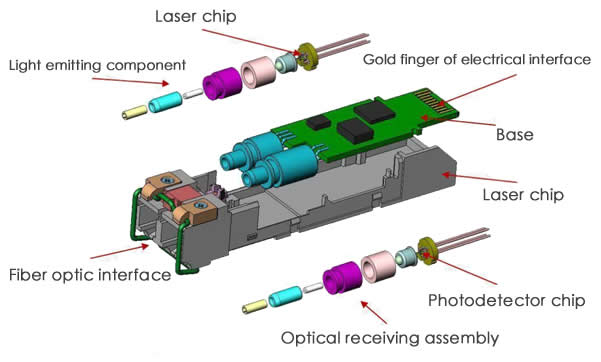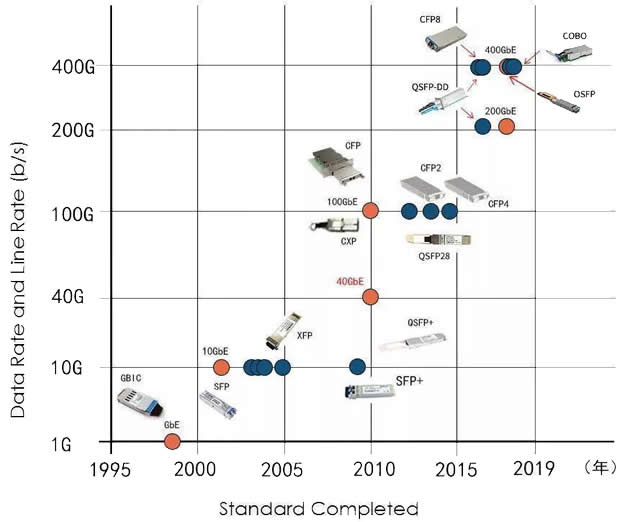With the rapid development of optical communication, many scenarios in our work and life have now achieved "optical in and copper out". That is to say, metal medium communication represented by coaxial cables and network cables is gradually being replaced by optical fiber medium.
Optical module is one of the core components of optical fiber communication system.
Composition and structure of optical module
Optical module, also known as optical module, is a device that transmits and receives light signals.
To be precise, optical modules are a general term for a variety of module categories, including optical receiving modules, optical transmitting modules, optical transceiver modules, and optical forwarding modules.

Today, the optical module we usually refer to generally refers to the optical transceiver module (the same is true in the following).
The optical module works at the physical layer, which is the lowest layer in the OSI model. Its function is simple to say, which is to achieve optical-to-electrical conversion. It turns optical signals into electrical signals and electrical signals into optical signals.

Although it seems simple, the technical content of the implementation process is not low.
A light module usually consists of a light emitting device (TOSA, including a laser), a light receiving device (ROSA, including a photodetector), functional circuits, and optical (electrical) interfaces.

At the transmitting end, the drive chip processes the original electrical signal and then drives the semiconductor laser (LD) or light-emitting diode (LED) to emit modulated optical signals.
At the receiving end, after the optical signal enters, it is converted into an electrical signal by an optical detection diode, and then output as an electrical signal after passing through a preamplifier.
Packaging of optical modules
For beginners, the most frustrating thing about optical modules is their extremely complex package names and confusing parameters.
Encapsulation: It can be simply understood as a type standard. It is the most important way to distinguish optical modules.
The reason why there are so many different packaging standards for optical modules is mainly due to the rapid development of optical communication technology.
The speed of optical modules is constantly increasing, and their volume is also constantly shrinking, so that new packaging standards are introduced every few years. It is often difficult to make the new and old packaging standards compatible with each other.
In addition, the diversity of application scenarios for optical modules is also a reason for the proliferation of packaging standards. Different transmission distances, bandwidth requirements, and usage locations correspond to different types of optical fibers, and optical modules vary accordingly.
Before explaining the packaging and classification, let's first introduce the standardization organizations of optical communication. Because these packages are determined by the standardization organizations.
At present, there are several organizations that standardize optical communication worldwide, such as the IEEE (Institute of Electrical and Electronics Engineers), ITU-T (International Telecommunication Union), MSA (Multi-Source Agreement), OIF (Optical Internet Forum), CCSA (China Communications Standards Association), and so on.
The most widely used standards in the industry are IEEE and MSA.
MSA may not be familiar to everyone, but its English name is Multi Source Agreement. It is a multi-vendor specification, which is a non-official organization form of the IEEE. It can be understood as an industry alliance behavior.
Ok, let's start with encapsulation.
First, we can look at the following chart, which accurately describes the emergence periods of different packages and their corresponding operating speeds.



